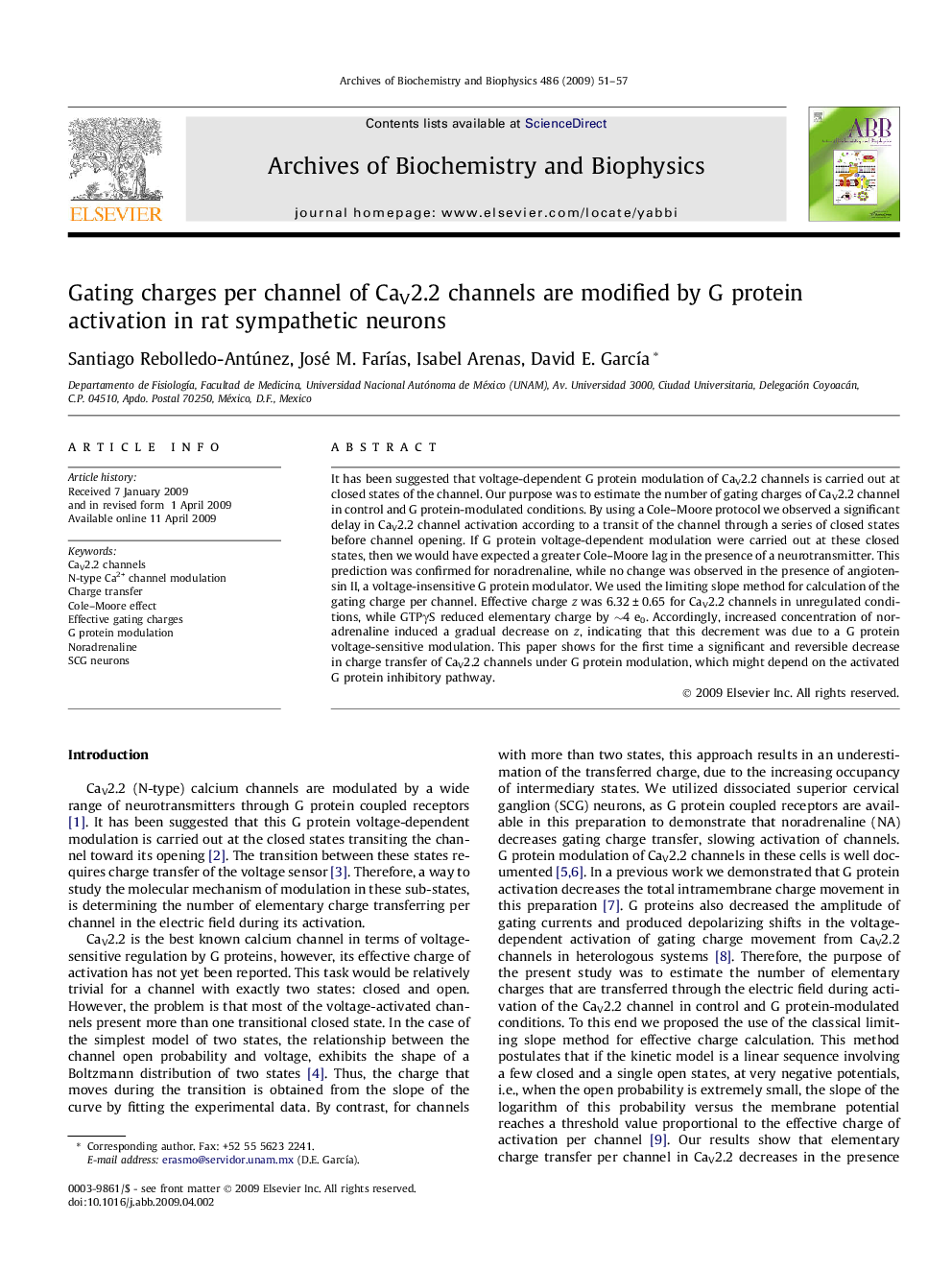| Article ID | Journal | Published Year | Pages | File Type |
|---|---|---|---|---|
| 1926421 | Archives of Biochemistry and Biophysics | 2009 | 7 Pages |
It has been suggested that voltage-dependent G protein modulation of CaV2.2 channels is carried out at closed states of the channel. Our purpose was to estimate the number of gating charges of CaV2.2 channel in control and G protein-modulated conditions. By using a Cole–Moore protocol we observed a significant delay in CaV2.2 channel activation according to a transit of the channel through a series of closed states before channel opening. If G protein voltage-dependent modulation were carried out at these closed states, then we would have expected a greater Cole–Moore lag in the presence of a neurotransmitter. This prediction was confirmed for noradrenaline, while no change was observed in the presence of angiotensin II, a voltage-insensitive G protein modulator. We used the limiting slope method for calculation of the gating charge per channel. Effective charge z was 6.32 ± 0.65 for CaV2.2 channels in unregulated conditions, while GTPγS reduced elementary charge by ∼4 e0. Accordingly, increased concentration of noradrenaline induced a gradual decrease on z, indicating that this decrement was due to a G protein voltage-sensitive modulation. This paper shows for the first time a significant and reversible decrease in charge transfer of CaV2.2 channels under G protein modulation, which might depend on the activated G protein inhibitory pathway.
